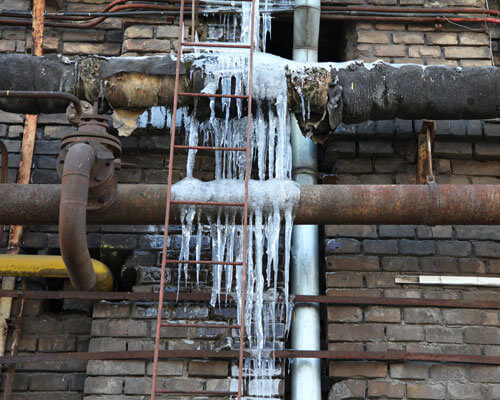Protecting Pipes from Cold Weather Damage: Key Strategies
Protecting Pipes from Cold Weather Damage: Key Strategies
Blog Article
Are you currently trying to locate content around How to prepare your home plumbing for winter weather?

Cold weather can ruin your plumbing, especially by freezing pipes. Right here's just how to stop it from happening and what to do if it does.
Introduction
As temperatures drop, the danger of frozen pipes increases, potentially resulting in costly repairs and water damages. Recognizing just how to avoid frozen pipelines is critical for home owners in cool environments.
Recognizing Icy Pipes
What creates pipes to ice up?
Pipes ice up when exposed to temperatures listed below 32 ° F (0 ° C) for extended durations. As water inside the pipelines freezes, it expands, putting pressure on the pipe wall surfaces and potentially creating them to break.
Threats and damages
Frozen pipelines can result in supply of water disruptions, residential or commercial property damage, and pricey repair work. Burst pipelines can flood homes and trigger extensive architectural damage.
Indications of Frozen Water Lines
Determining icy pipes early can avoid them from rupturing.
How to identify frozen pipelines
Try to find reduced water flow from faucets, uncommon smells or noises from pipelines, and noticeable frost on subjected pipes.
Avoidance Tips
Protecting vulnerable pipelines
Wrap pipelines in insulation sleeves or utilize heat tape to shield them from freezing temperatures. Concentrate on pipes in unheated or exterior locations of the home.
Home heating methods
Maintain interior rooms effectively heated, specifically areas with plumbing. Open up cabinet doors to enable cozy air to circulate around pipes under sinks.
Securing Exterior Plumbing
Garden pipes and exterior faucets
Detach and drain pipes garden hose pipes before winter season. Set up frost-proof spigots or cover outside faucets with shielded caps.
What to Do If Your Pipelines Freeze
Immediate activities to take
If you think icy pipes, maintain faucets open up to relieve pressure as the ice melts. Use a hairdryer or towels taken in hot water to thaw pipes gradually.
Long-Term Solutions
Architectural changes
Consider rerouting pipes far from outside walls or unheated areas. Include extra insulation to attic rooms, cellars, and crawl spaces.
Upgrading insulation
Invest in top quality insulation for pipes, attic rooms, and walls. Correct insulation assists maintain regular temperature levels and minimizes the risk of icy pipes.
Verdict
Avoiding icy pipes calls for positive measures and fast responses. By recognizing the causes, signs, and safety nets, property owners can secure their plumbing throughout cold weather.
5 Ways to Prevent Frozen Pipes
Drain Outdoor Faucets and Disconnect Hoses
First, close the shut-off valve that controls the flow of water in the pipe to your outdoor faucet. Then, head outside to disconnect and drain your hose and open the outdoor faucet to allow the water to completely drain out of the line. Turn off the faucet when done. Finally, head back to the shut-off valve and drain the remaining water inside the pipe into a bucket or container. Additionally, if you have a home irrigation system, you should consider hiring an expert to clear the system of water each year.
Insulate Pipes
One of the best and most cost-effective methods for preventing frozen water pipes is to wrap your pipes with insulation. This is especially important for areas in your home that aren’t exposed to heat, such as an attic. We suggest using foam sleeves, which can typically be found at your local hardware store.
Keep Heat Running at 65
Your pipes are located inside your walls, and the temperature there is much colder than the rest of the house. To prevent your pipes from freezing, The Insurance Information Institute suggests that you keep your home heated to at least 65 degrees, even when traveling. You may want to invest in smart devices that can keep an eye on the temperature in your home while you’re away.
Leave Water Dripping
Moving water — even a small trickle — can prevent ice from forming inside your pipes. When freezing temps are imminent, start a drip of water from all faucets that serve exposed pipes. Leaving a few faucets running will also help relieve pressure inside the pipes and help prevent a rupture if the water inside freezes.
Open Cupboard Doors
Warm your kitchen and bathroom pipes by opening cupboards and vanities. You should also leave your interior doors ajar to help warm air circulate evenly throughout your home.

I have been very curious about How To Avoid Freezing Pipes and I really hope you enjoyed reading our blog entry. Are you aware of another individual who is interested by the topic? Be sure promote it. We recognize the value of reading our article about 6 Ways to Prevent Frozen Pipes.
Click Here Report this page